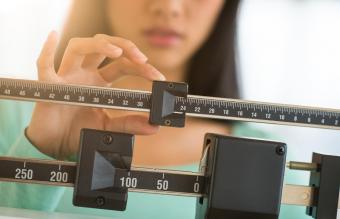
If you're diabetic your doctor may want you to go on a diabetic exchange diet. The purpose of this type of diet is to control both your weight and the amounts of sugar and cholesterol in your blood. The diet is very precise; it divides foods into six different groups and will most likely require you to eat three meals and one to three snacks a day. The diet strives to ensure that you eat the right amounts of the right foods to control your diabetes.
Diabetic Exchange Serving Amounts
Although a diabetic exchange diet requires exactitude it's not too difficult to follow. The specific amount of food you're supposed to eat will depend on your individual needs. Your doctor or dietician will give you a meal plan that lists the number of servings you may eat from each of the six food groups.
The diet gets its namesake because you're allowed to exchange any food in a group for any other from the same group, as long as you stay true to the specified serving sizes. For example, one slice of bread can be exchanged for three quarters of a cup of dry cereal.
Following are the food amounts for each group.
Breads and Starches
- Half of a three inch bagel
- One slice bread
- Half cup cooked cereal
- Half cup corn or one medium corn on the cob
- Six saltine crackers or three square graham crackers
- One small (two inch square) dinner roll
- Half cup cooked dried beans
- Half of an English muffin
- Half cup cooked green peas
- Half of a hamburger or hot dog bun
- Half cup cooked lima beans
- Half cup cooked pasta
- Half of a six inch piece of pita bread
- Half cup mashed potatoes or a three inch baked potato
- One third cup cooked rice
- Two rice cakes
- One six inch round tortilla
- Half cup cooked winter squash
Fruit
- One medium apple
- One small banana or half of a nine inch banana
- 17 small or 12 large grapes (any kind)
- One kiwi fruit
- One cup cubed melon (cantaloupe, honeydew or others)
- One small orange
- One medium peach
- Half of a large pear
- Half cup canned pineapple
- Two small plums
- Three dried prunes
- Two tablespoons of raisins (any kind)
- One and a quarter cup whole strawberries
- One and a quarter cup cubed watermelon
Vegetables
You can have one cup of the following vegetables served raw or half a cup of the following vegetables cooked:
- Asparagus
- Green or wax beans
- Beets
- Broccoli
- Cabbage
- Carrots
- Cauliflower
- Celery
- Collard greens
- Cucumber
- Eggplant
- Green beans
- Kale
- Mixed vegetables (without corn or peas)
- Mushrooms
- Mustard greens
- Onions (all kinds)
- Pea pods
- Peppers (all kinds)
- Radishes
- Salad greens (lettuce, romaine, spinach)
- Summer squash
- Tomatoes (fresh or canned)
- Turnip greens
- Turnips
- Zucchini squash
Dairy
- One cup skim, one percent or two percent milk
- One cup nonfat plain or sugar-free yogurt
- One third cup dry nonfat milk
- One cup skim or low-fat buttermilk
Meats and Substitutes
- One quarter cup of canned tuna or salmon
- One ounce chicken without skin
- One large egg or a quarter cup egg substitute (no more than three each week)
- One ounce fish (not breaded or fried)
- One ounce lean beef or pork
- One quarter cup of low-fat cottage cheese
- One one inch cube or one ounce low-fat solid cheese
- Half cup tofu
- One ounce turkey without skin
Fats
- One eighth of a medium avocado
- One tablespoon of regular cream cheese
- One tablespoon of regular margarine
- One tablespoon of regular mayonnaise
- Six almond or cashew nuts, ten peanuts or four pecan halves
- One tablespoon of oil, such as safflower, canola, corn or olive
- Two tablespoons of peanut butter
- One tablespoon of regular salad dressing
Do Not Eat List
In addition to following the exchange guidelines it's very important that you avoid the following foods:
- Cake
- Candy
- Cookies
- Frosting
- Granola bars
- Ice cream
- Jelly and jam
- Pastries
- Pie
- Regular sodas and colas
- Sugar covered cereals
- Sweet rolls
- Products containing:
- Corn syrup
- Dextrose
- Fructose
- Glucose
- High fructose corn syrup
- Honey
- Maltose
- Molasses
- Sucrose
- Sugar (brown, corn, or powdered)
- Syrup
If you've been told to go on an exchange diet you may feel overwhelmed at first. However, it will get easier overtime as you memorize the amounts of foods you're allowed to eat.







